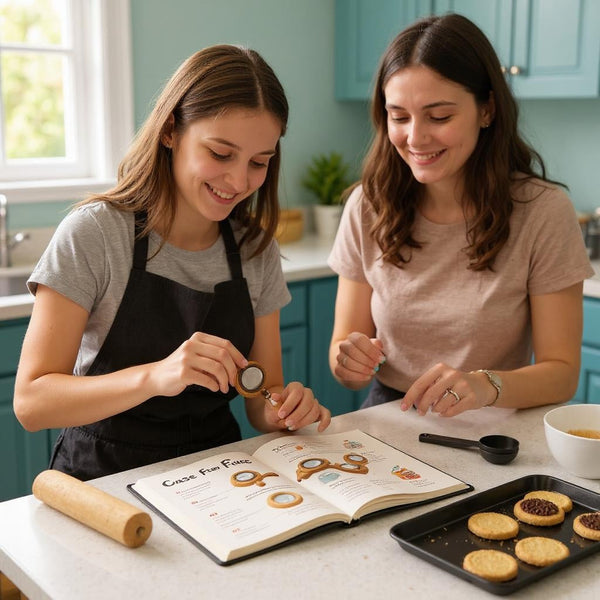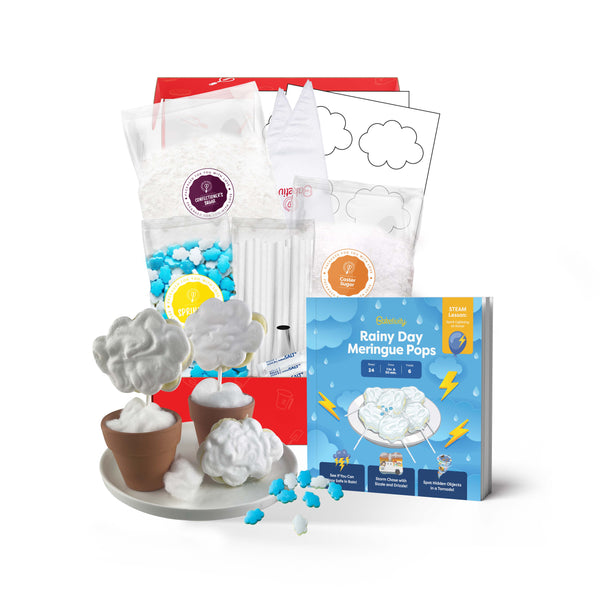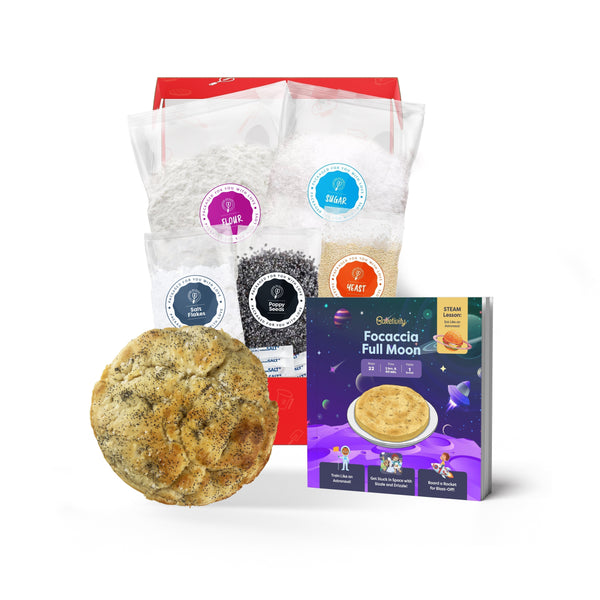Ever wondered how to turn your kitchen into a global classroom? We've discovered a delicious way to teach kids about different cultures - through food! It's like taking a world tour without leaving your dining room.
Picture this: your little ones giggling as they try to eat spaghetti with chopsticks or attempt to pronounce "gnocchi." These moments aren't just fun; they're golden opportunities for learning. By exploring international cuisines, we're not only tantalizing taste buds but also opening young minds to the rich tapestry of global traditions.Key Takeaways
- Food is a powerful tool for teaching kids about different cultures, engaging multiple senses and providing hands-on learning experiences.
- Cooking together as a family and hosting international potlucks are fun ways to explore global cuisines and create lasting memories.
- Incorporating food-based cultural learning into school curricula through cooking classes and food festivals can enhance students' understanding of geography, history, and traditions.
- Shared meals and food traditions offer opportunities to develop cultural empathy and break down stereotypes among children.
- Encouraging kids to try new foods from different cultures can be made fun through games, theme nights, and involving them in meal preparation.
Why Food is an Effective Tool for Cultural Education
Food speaks a universal language that transcends borders and brings people together. It's like a tasty time machine, whisking us away to far-off lands without ever leaving our kitchen. Let's explore why food is such a powerful tool for teaching kids about different cultures.Engages Multiple Senses
Food engages all five senses, creating a memorable experience for children. The sizzle of a stir-fry, the aroma of fresh herbs, the vibrant colors of exotic fruits, the texture of hand-rolled pasta - these sensory inputs create lasting impressions. Remember the first time you tried sushi? The cool, smooth texture of the rice, the tang of wasabi, and the delicate fish flavor probably stuck with you. For kids, these sensory experiences are even more impactful.Provides Hands-On Learning
Cooking is a hands-on activity that kids love. It's like a science experiment they can eat! Kneading dough for Indian naan bread or rolling sushi teaches children about food preparation techniques from different cultures. Plus, it's a great way to sneak in some math practice. How many cups of rice do we need for our paella? Can you halve the recipe for Greek spanakopita?Sparks Curiosity and Conversation
Food naturally piques curiosity. Why do people in some countries eat with chopsticks? What's the story behind the shape of a pretzel? These questions lead to fascinating discussions about history, geography, and cultural traditions. It's like opening a delicious book of world knowledge!Builds Cultural Empathy
Trying new foods helps kids develop empathy and respect for different cultures. It's one thing to read about a country, but it's another to taste its flavors. When children experience the spiciness of Thai food or the umami of Japanese cuisine, they gain a deeper appreciation for cultural diversity.Creates Lasting Memories
Food experiences often become cherished memories. Remember that time you tried to eat spaghetti with chopsticks and ended up with sauce all over your face? These funny, shared moments create bonds and positive associations with learning about other cultures.Encourages Family Participation
Cooking and eating together is a great way to involve the whole family in cultural education. It's like hosting a mini international food festival in your own home! Each family member can choose a country to represent and prepare a dish, turning mealtime into a globe-trotting adventure. Food is more than just sustenance - it's a delicious gateway to understanding the world around us. By using food as a teaching tool, we're not just filling bellies, we're expanding minds and fostering cultural appreciation. So, who's ready to take their taste buds on a world tour?Benefits of Teaching Kids About Different Cultures Through Food
Teaching kids about different cultures through food offers a smorgasbord of benefits. It's like opening a treasure chest of flavors, aromas, and traditions that can spark a lifelong curiosity about the world. Remember when you first tried sushi and thought, "Is this really food?" That's the kind of eye-opening experience we're talking about! Food education goes beyond just satisfying hunger. It's a feast for the mind, too. Kids develop a broader palate and a more open mindset. They learn to appreciate diversity in a tangible, delicious way. Ever seen a child's face light up when they successfully use chopsticks for the first time? It's priceless! Cultural food exploration also boosts cognitive skills. Kids learn geography as they discover where dishes originate. They practice math while measuring ingredients. Language skills improve as they pronounce new food names. It's like a full-course meal for the brain! Social skills get a hefty serving, too. Sharing meals from different cultures encourages empathy and respect. Kids learn to value differences and find common ground. They might even make new friends over a plate of homemade empanadas! Let's not forget the family bonding that happens in the kitchen. Cooking together creates lasting memories and strengthens relationships. Plus, it's a great way to get picky eaters to try new things. Who can resist helping to make their own pizza? Lastly, food education plants the seeds for future global citizens. It nurtures curiosity about the world and its people. Kids who appreciate diverse cuisines often grow into adults who embrace cultural differences. Isn't that a recipe for a better world? So, are you ready to turn your kitchen into a classroom? What global dish will you and your kids tackle first?Exploring Global Cuisines with Children
 Introducing kids to global cuisines is a fun way to broaden their cultural horizons. We'll explore two exciting approaches that make learning about different cultures through food an enjoyable experience for the whole family.
Introducing kids to global cuisines is a fun way to broaden their cultural horizons. We'll explore two exciting approaches that make learning about different cultures through food an enjoyable experience for the whole family.
Cooking Together as a Family
Cooking together creates lasting memories and teaches valuable life skills. We can turn our kitchens into mini food labs, experimenting with flavors from around the world. Here's how:- Pick a country: Let kids choose a country they're curious about.
- Research recipes: Look up traditional dishes from that country together.
- Shop for ingredients: Visit ethnic grocery stores to find authentic items.
- Cook and learn: Discuss the country's culture, geography, and history while preparing the meal.
- Taste and rate: Have everyone try the dish and share their thoughts.
Hosting International Potlucks
Potlucks are a great way to share cultures and flavors with friends and neighbors. Here's how to organize a global-themed potluck:- Set a theme: Choose a continent or region to focus on.
- Assign dishes: Have each family bring a dish from a different country within the theme.
- Create passports: Make pretend passports for kids to "stamp" as they try each dish.
- Share stories: Encourage everyone to share facts about the country their dish represents.
- Play music: Create a playlist featuring music from the chosen countries.
Incorporating Food-Based Cultural Learning into School Curriculum
Food offers a delicious gateway to cultural education in schools. By integrating culinary experiences into the curriculum, educators can create engaging, memorable lessons that broaden students' horizons.Multicultural Cooking Classes
Cooking classes bring global flavors to life in the classroom. Students don aprons and become mini chefs, whipping up dishes from around the world. They might roll sushi one week and bake empanadas the next. These hands-on lessons teach more than just recipes; they're a crash course in geography, math, and cultural traditions. Ever tried to explain fractions to a fidgety 8-year-old? Watch their eyes light up when you show them how to measure ingredients for churros! As kids chop, mix, and taste, they're absorbing knowledge without even realizing it. It's like sneaking veggies into their favorite smoothie – they're getting all the good stuff while having a blast.International Food Festivals
Picture this: the school cafeteria transformed into a global food market. Colorful banners hang from the ceiling, and enticing aromas fill the air. That's the magic of an international food festival! These events are a feast for the senses and a buffet of learning opportunities. Students become ambassadors for different countries, setting up booths with traditional dishes and cultural displays. It's like a potluck party on steroids, where everyone gets to be the cool kid with the "exotic" lunch. Who wouldn't want to trade their PB&J for a taste of Thai mango sticky rice? These festivals do more than tickle taste buds; they spark curiosity and conversation. Kids might ask, "Why do people eat with chopsticks?" or "What's the story behind this weird-looking fruit?" Before you know it, they're diving into discussions about history, agriculture, and cultural practices. Have you ever seen a group of third-graders attempt to eat spaghetti with chopsticks? It's comedy gold! But it's also a valuable lesson in empathy and understanding different ways of life.Using Food to Teach Geography and History
Ever wondered how a pizza could take you on a journey through time and across continents? That's the magic of using food to teach geography and history! It's like turning your plate into a delicious map of the world. Let's start with geography. Imagine biting into a taco and suddenly finding yourself in Mexico. Or slurping up some pho and feeling the bustling streets of Vietnam. Each dish is a tasty passport stamp, helping kids learn about different countries and regions. For example, we can create a "world on a plate" activity. Challenge kids to arrange foods on their plate to represent different continents. Broccoli for forests, mashed potatoes for mountains, and blue jello for oceans. It's a fun way to visualize global landscapes while enjoying a meal. History comes alive through food too. Ancient Roman bread recipes or Medieval stews can transport kids back in time. It's like having a time machine in your kitchen! Ever tried to eat like a Viking? It's a hilarious and eye-opening experience that kids won't forget. Here's a funny story: We once attempted to recreate an ancient Egyptian feast. Let's just say, our attempt at making papyrus bread ended up looking more like fossilized dinosaur droppings! But hey, it sparked a great conversation about ancient cooking methods. Food can also illustrate historical events. Why not recreate the first Thanksgiving meal or make hardtack to understand what sailors ate on long voyages? It's a hands-on way to digest history, pun intended! Questions to ponder:- What does your favorite food say about its country of origin?
- How have certain dishes evolved throughout history?
- If you could eat a meal from any time period, which would you choose?
Connecting Food to Cultural Traditions and Celebrations
Food isn't just fuel for our bodies; it's a tasty ticket to understanding different cultures. Ever wondered why we eat certain foods on holidays or special occasions? It's like each dish tells a story about where it came from and why it's important. Let's take a journey through some mouth-watering traditions:- Chinese New Year dumplings: These little pockets of deliciousness symbolize wealth and prosperity. Families gather to make them together, filling the house with laughter and the aroma of good fortune.
- Mexican Day of the Dead bread: This sweet treat honors departed loved ones. Its circular shape represents the circle of life, and the colorful decorations make it a feast for the eyes and taste buds.
- Indian Diwali sweets: These sugary delights light up the Festival of Lights. Sharing them with friends and family is as much a part of the celebration as the fireworks.
- American Thanksgiving turkey: This big bird takes center stage at family gatherings. It's a nod to the early settlers and their Native American neighbors sharing a harvest meal.




